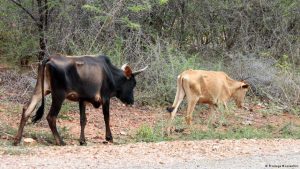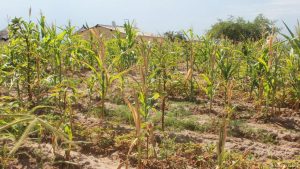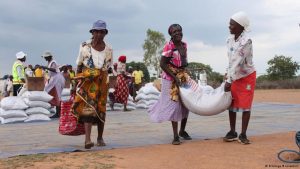Effects of El Nino: Drought threatens food supply in Zimbabwe
El Niño is a climate cycle in the Pacific Ocean with a global impact on weather patterns. The cycle begins when warm water in the western tropical Pacific Ocean shifts eastward along the equator toward the coast of South America.
The effects of this has pushed nearly 3 million rural Zimbabweans to the brink of food insecurity and famine.

In Zimbabwe’s ongoing drought, the constituency of Chipinge South in Manicaland Province is one of the worst-affected areas. There, only hardy domestic animals like goats have been able to survive the drought that has hit the southern African country.
The devastating El Nino event – combined with climate change – has disrupted rainfall patterns and shortened by almost half the rainy season, which normally starts in October and ends in April.
According to government records, as of February 24, people across the country have lost 19,300 herds of cattle to drought.

Cattles are dying
Chipinge resident Gilbert Sithole said he has lost 23 herds of cattle in five months due to inadequate water supply.
“Cattles are dying here” said Gilbert. People from other areas who still have viable grazing pastures have been coming to buy the cows for as low as $10 or $20. “We are forced to give them at such prices – because if we decide otherwise, the cattles are still dying.”

Starvation is on the increase
The situation has become so dire that a number of children have dropped out of school.
A resident Tatsunga Mazivokufa had to withdraw his children from school because they were fainting in class after leaving home for school in empty stomach owing to the disastrous famine.
What Is the Government Doing?
To conserve water, Zimbabwe’s Environment, Water and Climate Change Minister Oppha Muchinguri- Kashiri recently directed village heads to form water-rationing committees in rural areas, which could monitor borehole water usage.
“I wish to call upon our village water point committees, our village pump mechanics and district water technicians to rise to the occasion so that pump breakdowns are kept to the barest minimum,” minister Muchinguri stated.
On the other hand, an IT specialist and consultant whom is a native of Zimbabwe says there is no visible plan by the government in tackling this problem.
The government has no real action plan to counter the drought effects – Jefrey Matenje
The government bused in hungry villagers to satisfy the megalomaniac egos of a vain leader says a native of Zimbabwe.

Empty reservoirs and wells
The shorter-than-usual rainy season experienced by Zimbabwe this year has failed to fill the country’s 11,000 major reservoirs, which are the country’s main sources of irrigation and drinking water.
These dams are about half full at a time when they are supposed to be spilling over.
In rural areas, wells are drying up, with water tables being depleted by the day.
Grains are scare to find for cultivation.
Jefrey Matenje “The people as always will find their own means . Those who can source grains elsewhere are doing just that privately”



